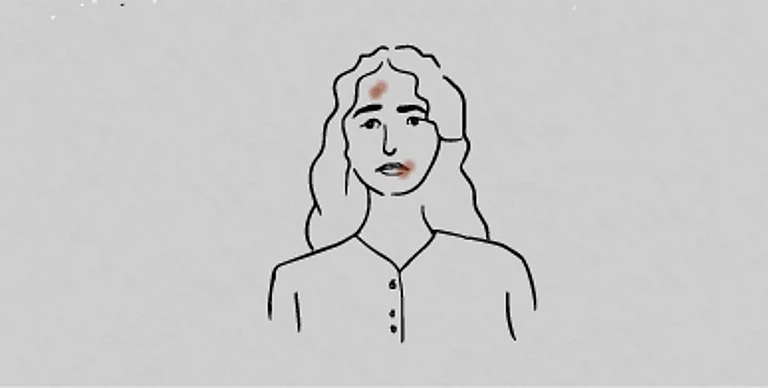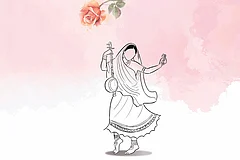In Czech novelist Milan Kundera’s short story Lost Letters Part I, when Mirek and Zdena are on their way home in a streetcar after making love for the first time, he finds her sitting on a corner bench in the jolting streetcar, “Her face sullen, closed, surprisingly old.” Asking about her silence, Mirek learns that she had not been satisfied with their lovemaking. She says he made love to her “like an intellectual”.
“In the political jargon of those days, the word ‘intellectual’ was an insult. It indicated someone who did not understand life and was cut off from the people,” Kundera wrote.
It was not clear to Mirek what exactly Zdena meant by making love like an intellectual. It was, perhaps, for the lack of a better language, that she used it to express her dissatisfaction. Nevertheless, it was probably an impact of the communist revolution that encouraged Czech women to freely express their sexual feelings.
As historian Kateřina Lišková points out, in the early years of communist rule in Czechoslovakia in the 1950s, women were equal to men not only at work and according to the law, but also in expert discussions on sexuality and marriage. The party preached women’s equal right to orgasm. In the early 1950s, the government even embarked on nationwide research into the female orgasm.
About a century before, from the mid-19th century, socialist and communist ideals stormed Europe and America with many radical ideas involving not only the mode of production and ownership, but also love and sex. The early socialists, including Frenchman Charles Fourier and British Robert Owen, came up with sweeping attacks on the existing family structure, advocated the abolition of marriage and some even advocated “free love”.
The early socialists came up with sweeping attacks on the existing family structure, advocated the abolition of marriage and some even advocated “free love”.
According to historian Richard Weikart of California State University, although Karl Marx and Friedrich Engels were not the instigators of the anti-family trend among socialists, they—especially Engels—“contributed mightily to it”. Going against the dominant moralities, they preferred love marriages over those arranged by parents and were pro-abortion and pro-divorce.
Engels, in his The Origin of Family, Private Property and State, argued that monogamy in modern civilisation was “supplemented by adultery and prostitution”, which was available for men. Marriages were determined by convenience or material advantage, either by the parents or the partners. The chivalrous love of the Middle Ages was by no means conjugal, he said, adding, “It heads straight for adultery and the poets of love celebrated adultery.”
In contrast, in the new society, private housekeeping would be transformed into a social industry, and the care and education of the children—whether legitimate or not—would become a public affair. This would free women from the chain of household tasks and remove all the anxiety about the moral and economic consequences that prevent “a girl from giving herself completely to the man she loves”, Engels thought.
“Will not that suffice to bring about the gradual growth of unconstrained sexual intercourse and with it a more tolerant public opinion in regard to a maiden’s honour and a woman’s shame?” Engles asked. He imagined that in the new society, generations would grow up, with men not knowing “what it is to buy a woman’s surrender” and women not considering anything other than real love while engaging with a man.
Such backgrounds made many think that the coming revolution would also bring about a sexual revolution and radicalise romantic relationships. “The sexual act must be seen not as something shameful and sinful but as something which is as natural as the other needs of healthy organisms such as hunger and thirst,” influential Bolshevik revolutionary and feminist Alexandra Kollontai famously wrote in a 1921 article.
In a 2011 article, titled Love in the Time of Communism: A Case Study in Revolutionary Overreach, Sam Feldman showed that in Russia, decrees and legal reforms between 1917 and 1926 removed many government restrictions on sex and relationships. Divorce became as simple as filling out a form and waiting for three days. Couples were allowed to cohabitate and marry without informing the State. “Abortion, although frowned upon, became freely available and free.”
The reversal in Russia started taking formal shape in the mid-1930s. Male homosexuality was re-criminalised in 1934, partly in response to reduced childbirth rate and increased abortions. Abortion was banned in 1936.
However, it did not take even a decade for reversals to start, not only in Soviet Russia but also in other countries where such revolutions happened. First, the party got involved, and then the State. After all, they did not consider love to be a ‘private’ affair, as it involved more than one individual.
Looking at every aspect of human existence from the prism of class divisions, communists distinguished between bourgeois love and proletarian love—the first separates the couple from society, and the second strengthens the couple’s bond with the collective.
In general, top communist theoreticians and practitioners spent much less time on discussing romantic and passionate love between individuals than on other subjects involving collective goals. In times of revolution, individual love had to take a backseat, they believed.
At the heart of socialist ideas on relationships was gender politics—the question of women’s empowerment and liberation. Socialists and communists aimed at making women equal partners in every relationship. But for many of them, issues like women’s liberation and freedom of love would come on their own when the politico-economic revolution was successful.
This is evident from the conversations that German communist leader and women’s organiser, Clara Zetkin, had with Vladimir Lenin, who led the Bolshevik revolution in Russia in November 1917. Zetkin recalled that in the immediate post-revolution years, Lenin told her that he could not believe his ears when he heard that questions of sex and marriage were the main subjects dealt with in the reading and discussion evenings of women comrades in Germany.
“Is now the time to amuse proletarian women with discussions on how one loves and is loved, how one marries and is married?” Zetkin quoted Lenin as asking. He advised that it was time when all the thoughts of women comrades must be directed toward the proletarian revolution, which would create the basis for “a real renovation in marriage and sexual relations”.
By that time, Kollontai’s comparison of sex with hunger and thirst had popularly metamorphosed into the ‘glass of water theory’, suggesting that in a communist society, the satisfaction of sexual desires will be as simple and unimportant as drinking a glass of water.
Lenin was evidently disturbed by the popularity of the theory, saying that it made the young generation “mad, quite mad” and “proved fatal to many young boys and girls”. Lenin called the theory un-Marxist and anti-social, arguing that drinking water is an individual’s matter, but love and sex involved more than one and could lead to the birth of new lives.
One of the outcomes of romantic affairs taking a backseat due to the urgency of the Soviet revolution was what Kollontai, in a 1923 speech, highlighted an increase in ‘Wingless Eros’. The term referred to sex without attachment and mutual obligations, which “does not give rise to sleepless nights, soften the will, or entangle the rational workings of the mind”.
This form of relationship became dominant because ‘Winged Eros’—“love woven from the finest strands of every kind of emotion”—is ‘demanding’. Men and women had “neither the time nor the spare inner strength for love’s joys and tortures”.
However, as the situation calmed down with the Bolsheviks coming to power, the youth were now rediscovering ‘Winged Eros’. This had to be addressed, as complexities arising out of it would impact society. She encouraged falling for ‘Winged Eros,’ as it awakens empathy, compassion, and the desire to help each other, the qualities the builders of a new society require.
Kollontai also stressed that since proletarian ideology subordinates the love between two members of a collective to the more powerful emotion of love-duty to the collective, exclusivity in love, like “all-consuming” love, cannot be the ideal in working class ideology. “Bourgeois morality demanded: everything for the one you love. The morality of the proletariat demands: everything for the collective,” she said.
Reversals in the Soviet Union started quite soon. Psychoanalyst Wilhelm Reich wrote that during his visit to Moscow in 1929, he heard the youth were being imparted sex education. “It was immediately evident that this enlightenment was antisexual. Essentially, it was nothing but information about venereal diseases and about conception, in order to scare the youngsters away from sexual intercourse,” wrote Reich in his 1945 book, The Sexual Revolution.
While elaborating on the communist misconception about love and sexuality, Reich cited how communist leader Gertrude Alexander wrote in 1927, “Unrequited love, with its danger of loneliness and pain, will hardly play a role in a society which sets collective tasks and offers collective joys, a society in which individual sorrows are no longer important.” “Few people know how burning was the struggle for the ‘new life’, for a satisfactory sex life, in the Soviet Union,” Reich wrote.
In reality, communists—more than social democrats—struggled between radicalising the concept of man-woman relationships and replacing one set of conservative morality with another.
The reversal in Russia started taking formal shape in the mid-1930s. Male homosexuality was re-criminalised in 1934. In part, as a response to reduced childbirth rate and increased abortions, abortion was banned in 1936. By the early 1940s, marriages had to be registered with the State, and divorce became difficult. The government also announced subsidies to encourage childbirth.
In Leftist organisations, from top leaders to grassroots-level workers, many organisers married the love of their life. Communist parties and their frontal organisations and even armed squads worldwide have had a fair share of couples who met each other during party programmes and got married. But falling in love had its own difficulties under communist rule, as volumes of literature from communist-ruled countries show.
Similarly, in post-revolution Hungary of the 1950s, as László Kürti, a professor at Rice University, USA, points out, a popular slogan said, “For a married woman to bear a child is an obligation; for a girl, it is honour.” Child-bearing mothers were identified as progressive and socialist; they received maternity leave and supplementary consumer goods. There even was a ‘multiple-child bonus’. Abortion was outlawed, childless families were forced to pay a surtax, and contraception was available only in extreme circumstances.
There, of course, was the other trend as well. In the book Love in the Time of Communism: Intimacy and Sexuality in the German Democratic Republic, Josie McLellan showed divorce and abortion rates soared, as did the rate of birth outside marriage, after the foundation of the German Democratic Republic in 1949. Respondents to interviews by the author revealed that people living under the East German regime ‘had more sex and we had more to laugh about’.
The sexual revolution was very much part of the discussion in the student movements of the 1960s that were essentially Leftist. In the US, T-shirts with “communism, atheism, free love” printed on them became a fashion craze among radical students during the 1960s and the 1970s.
In Czechoslovakia, the 1950s and 1960s saw fairly liberal ideas and practices—quite in contrast to Soviet Russia. But reversals started in the 1970s when women were taught to aspire to be caring mothers and docile wives.
MORE FROM THIS ISSUE
In reality, communists—more than social democrats—struggled between radicalising the concept of man-woman relationships and replacing one set of conservative morality with another. When in power, they tended to take it upon themselves to determine which love affair was of societal benefit and which was not. As Popova wrote in Bulgaria’s context, “Sexual needs must be denounced precisely because they have a distractive nature—they divert the individual from… labour responsibilities.”































